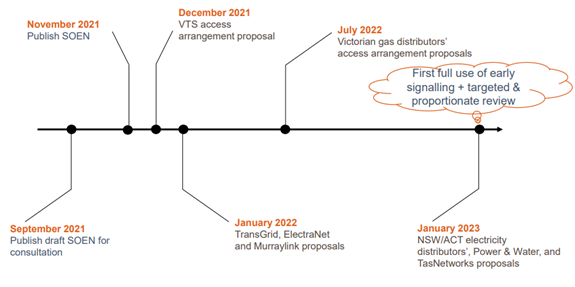AER engagement reset a win for all
The Australian Energy Regulator (AER) has released a new industry-supported initiative that puts customers at the centre of network resets. We look at what the draft Better Resets Handbook is, and how it aims to streamline the regulatory process.
What is a reset?
Revenue determinations, often referred to as ‘resets’, occur every five years and determine how much revenue network service providers (NSPs) can recover from customers to safely and reliably deliver network services.
The regulatory determination process operates under a propose-respond model, which means that NSPs submit a regulatory proposal to the AER every five years for approval, and the AER makes a decision about it. It is an extensive process and requires NSPs to engage with their customers and stakeholders in an integrated way with regards to key inputs such as their proposed network and non‑network solutions, connections policies and proposed tariffs.
Why change the process?
Australia’s energy system is undergoing a significant transition, occurring at grid scale and at individual customer level. The AER highlights that it expects to see significant network investment to manage the impact of the energy transition.
The AER emphasises the need to ensure that customer preferences drive outcomes and recognises that it needs to continue to evolve how it regulates to ensure the long-term interests of consumers are met.
The purpose of the Better Reset Handbook is to incentivise regulatory proposals that reflect consumer preferences and are capable of acceptance by the AER. This is designed to deliver a more efficient regulatory reset process and result in better customer outcomes. It reflects networks’ increasing focus on customer engagement in recent regulatory processes, as acknowledged by the AER.
Figure 1: Case Studies – AER draft Better Resets Handbook
What changes?
The AER’s draft Better Resets Handbook proposes changes to the reset process, placing an increased focus on consumer engagement and proposing a targeted review stream.
The Handbook:
- sets out the AER’s expectations for consumer engagement and the key regulatory proposal topics of capital expenditure, operating expenditure, regulatory depreciation and tariffs, and
- outlines the AER’s proposed process for when proposals meet expectations.
When the AER’s expectations are met on the key regulatory proposal topics, it is proposing to undertake a more efficient process to determine whether it can accept those parts of a NSP’s proposal – this is the proposed ‘targeted review stream’, which will operate within the current regulatory framework.
The targeted review stream creates the opportunity for the AER to provide an NSP with an early signalling on its proposal, providing guidance on:
- which aspects of the proposal have met the AER’s expectations and can be subject to a targeted review,
- for topics subject to a targeted review, which areas will be of particular focus, and which are not, and
- which topics will be subject to the AER’s standard assessment approach.
This early guidance seeks to assist networks in submitting a proposal that is capable of acceptance at the draft decision stage, likely reducing the work required at the later stages of the regulatory process (a NSP’s revised proposal and the AER’s final decision).
To be considered for the targeted review stream, a NSP must:
- in the early stages of its pre-lodgement engagement, notify the AER of its intention to access the targeted review stream,
- publish and consult on a draft proposal during the pre-lodgement stage before submitting its initial regulatory proposal to the AER, and
- submit an independent customer report on the regulatory proposal to the AER.
There will also be a greater role for the AER in the pre-lodgement stage by providing support to consumers and feedback and guidance to the NSP on its approach.
What are the next steps?
The AER is seeking feedback on its draft Handbook and will host a public forum for stakeholders to have their say.
Once finalised, the first full application of the Better Resets Handbook will be available to the NSW/ACT/TAS/NT upcoming distribution determinations, as shown in the diagram below.
Figure 2: Application of the Better Resets Handbook – AER stakeholder slides [note that it was previously named the Statement of Expectations for Networks (SOEN)]
ENA looks forward to working with the AER through the consultation period to design a final handbook, fit-for-purpose for the energy transition, that improves the efficiency of the regulatory reset process and ensures better outcomes for customers.





